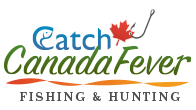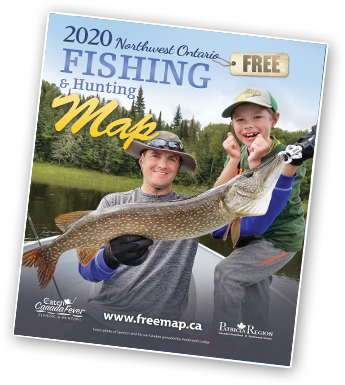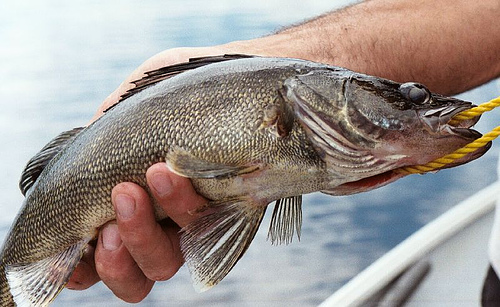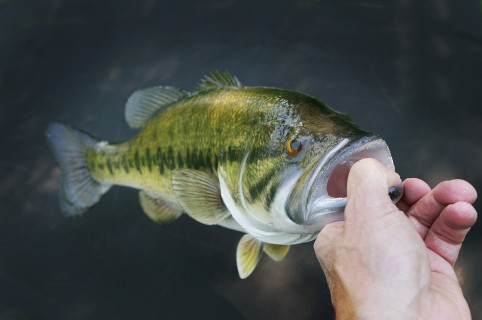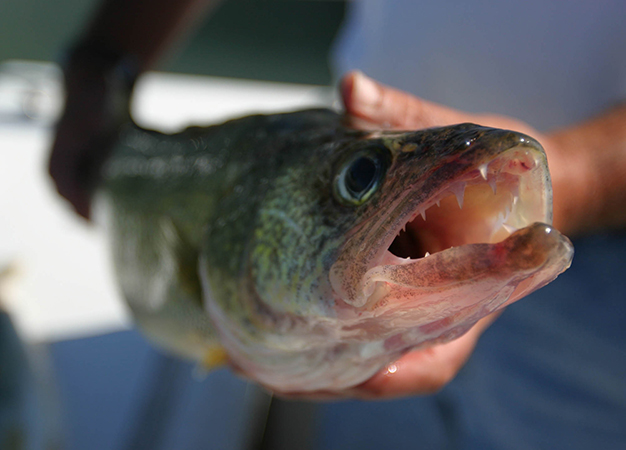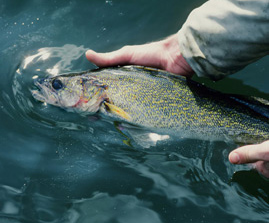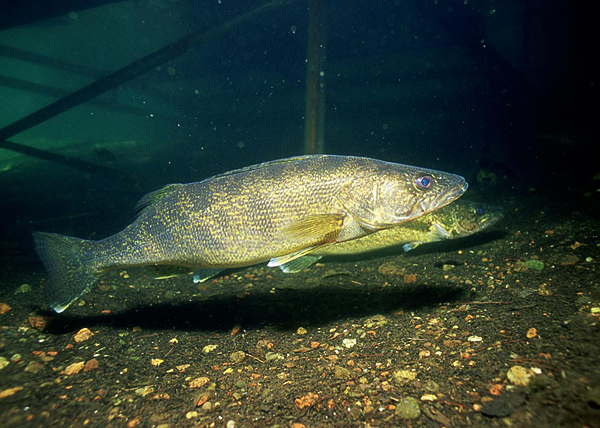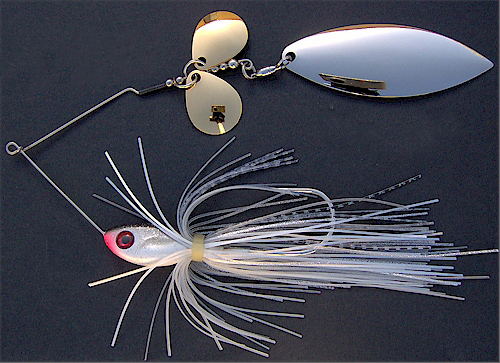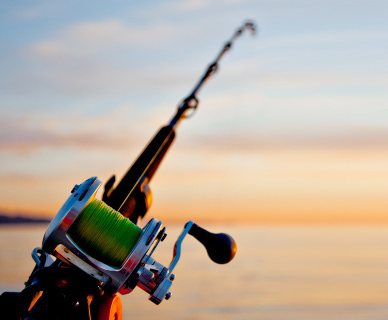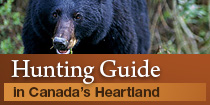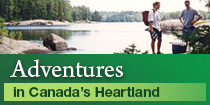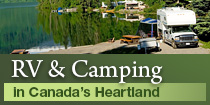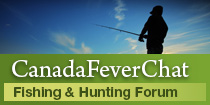Canada Family Fishing Resort
Picture this – your family arrives at a resort in Canada on a hot summer day, whether it’s by bus, your own vehicle or plane. You step outside and take in all the beauty around you. Trees, flowers and a beautiful lake. A friendly Canada family fishing resort worker greets you and your family and shows you to your own cabin at the resort. The next morning, your family wakes up to birds singing and the sun shining and after a satisfying breakfast at the resort you head to the lake for some quality family time. The rest of the morning is spent on a beautiful Canadian lake, enjoying the sport of family fishing. After a successful morning of catching some tasty walleye your family stops at a small island near the resort and have a shore lunch. The kids have a quick swim in the refreshing Canadian lake. Your family goes fishing for the rest of the afternoon and head back to the resort when the sun starts to set. If this Canada family fishing resort vacation sounds great to you, you will need to figure out exactly what you would like to experience during your stay in Canada to plan your best family fishing resort vacation yet.
There are so many options available when planning a trip to a Canada family fishing resort. Will you want to fly-in, or drive up? Stay at an out-post, resort, or lodge? Will you want your meals prepared for you and your family, or will you cook for yourself? These are all things to take into consideration when planning your stay at a Canada Family Fishing Resort in the beautiful Patricia Region.
The Patricia Region
The Patricia Region (Canada’s Heartland) is located in Northwestern Ontario, Canada, just North of International Falls, MN. It is also known as “Canada’s Heartland”. Canada’s Heartland is an incredible region, full of lakes and wildlife. The total land and water area of the region is 70,000 square miles- approximately the size of Minnesota, making it an ideal area for family fishing.Canada’s Heartland has many small communities, the total population of the entire area is less than 50,000. Canada’s Heartland’s main industries include resource based tourism, pulp and paper and lumber and mining. The region is well known for it’s beautiful lakes, and great fishing and hunting. The main fish species are Walleye, Northern Pike, Lake Trout, Muskie, Small Mouth Bass, Perch and Whitefish. Hunting includes game such as bear, moose, deer, wolf, ducks and rabbits. The lakes in the region are ideal fishing and hunting locations for resorts. In total, there are 290 different resorts in The Particia Region (Canada’s Heartland). Out of that 290, there are 200 resorts which are members of the Patricia Region (Canada’s Heartland) Tourist Council. The main communities which have many of the resorts on lakes nearby are Dryden, Sioux Lookout, Red Lake, Ear Falls, Ignace, Vermilion Bay and Pickle Lake.
Types of Resorts
There are several types of Canada family fishing resorts available. Choosing the right resort can be the difference between a good and a great family fishing trip in Canada.First, there are fly-in outposts. To get to a fly-in outpost your family will take a plane to the main lodge of the resort, and from there you will boat to a secluded cabin. Often the cabins are on their own small lake or so far from other cabins, it feels as though you are alone in the beautiful Canada wilderness. Fly-in outposts are great for family fishing vacations because you are far away from the hustle and bustle of city life. Your family will have plenty of quality time together spent fishing, swimming, and whatever else you choose to do during your stay.Your family may be required to do your own housekeeping and cooking at these secluded cabins, and you will be given a radio in case of emergencies. Some resorts offer guides, which can either come for the day to your cabin and help your family fish for the day, or stay with you during your stay and cook for you as well. Fly-in outposts really give you the full Canadian fishing experience. Fly-in resorts are also available. Similar to fly-in outposts, you are picked up by a float plane and flown to a secluded resort. However, at a fly-in resort you stay near the main lodge and you will be near the other guests. Fly-in resorts offer guides, housekeeping and meal preparation with the seclusion of a private lake reserved just for the lodge and it’s guests. A private lake often optimizes fishing by ensuring the lake is not over fished.
Drive-in lodges are another great option during your stay in Canada. Drive-in lodges are accessible by vehicle. Some drive-in lodges and resorts even have bus service, which takes care of all of the traveling for you and your family. Generally at drive-in resorts, there will be a main lodge with several cabins surrounding it. Drive-in resorts also offer housekeeping, meal preparation, guides and often other activities for the family, making them quite the crowd pleaser. Drive-in Canada family fishing resorts are often most popular because of their accessibility. The guides the resorts offer are very skilled angler’s that have often lived in the area for years and will guide you to the best fishing spots to help you get the most out of your stay at the Canada family fishing resort. They know all of the hot-spots, as well as what bait is best, different techniques, and Drive-in lodges often have other activities to keep the family busy such as hiking, blueberry picking, bird watching, local festivals, photography opportunities as well as swimming locations. There is a new family experience waiting around every corner.
Types of Plans
When planning your Canada family fishing resort vacation it is also wise to consider what type of plan your family will be wanting during your stay. There are three different types of plans offered. Canada family resorts will offer either an American plan (AP), Modified American Plan (MAP), or a Housekeeping Plan (HK).
American Plans (AP) include all meals, daily maid service, boats and motors, bait and gas, and occasionally guides. This plan would be ideal for a family with young children, or families that do not want the hassle of cleaning their rooms or preparing their own meals. The family fishing resort workers will take care of your every need during your family’s stay, allowing your family to focus on what you came there to do- have fun and fish. The Modified American Plan (MAP) allows you to pick and choose from the services of the American Plan (AP). Your family will get to choose which meals you would like prepared, and it may or may not include daily maid service. This is more cost efficient, and allows your family to choose what they need most, without paying for the extras you can take care of yourself. A Housekeeping Plan (HK) allows your family to prepare all of your own meals, and does not include daily maid service. This would be ideal for a family on a budget, that does not mind cooking and cleaning while on a family fishing trip. Often there are boat and boat motor packages available as well as gas and bait for sale.
Fishing in Canada
Knowing what type of fish you would like to catch can help you choose the right Canada family fishing resort and help make the best of your vacation. There are a few popular type of fish that most angler’s in Northwestern Canada go fishing for. Walleye, are the most popular fish to be eaten. They are also known as “pickerel”. They are in many lakes across Canada, especially the Patricia Region. Walleye get their name from their eyes, which reflect light. The fish’s eyes allow them to see in darker conditions, which is why many angler’s look for them at night when they are more actively feeding. “Walleye chop” refers to rough, choppy water that allows anglers to catch a glimpse of walleye easier while fishing. Other good times for fishing for Walleye would be around dawn or dusk, when it is darker, or during overcast days. Walleye are commonly found in deeper water, especially during the warmer days of summer. They are mostly olive and gold in color. They have large mouths armed with many teeth. The dorsal and anal fins are spinous, making it important to grab them properly to avoid being injured. The world record for a walleye is 25 pounds.
Northern Pike, also known as “jack fish”, are generally olive green with yellow fading to white along the underside. Pike are very common in Canada. Although similar looking to the muskellunge (muskie), they are quite different. The northern pike has light markings on a dark body. Pike are commonly found in sluggish streams and shallow, weedy places in lakes as well as cold, clear, rocky water. Pike are not as known for taste so much as the great fight they put up when being caught. Some good techniques to use to catch a pike would be lure fishing and jerk baiting. Lake fishing for pike from the shore is especially effective during springtime, at which stage the big pike move into the shallows to spawn in weedy areas, and later many remain there to feed on other spawning coarse fish species to regain their condition after spawning. Smaller jack pike often remain in the shallows for their own protection, and for the small fish food available there. For the hot summer period and during non-active phases the larger female pike tend to retire to deeper water and/or places of better cover. This gives the boat angler good fishing during the summer and winter seasons. Trolling (towing a fairy or bait behind a moving boat) is a popular technique. The world record for a Northern Pike is 55 lb.
Muskellunge, otherwise known as the Muskie, has a body which is typical of ambush predators with an elongated body, flat head and dorsal, pelvic and anal fins set far back on the body. The fish are a light silver, brown or green with dark vertical stripes on the flank, which may tend to break up into spots. In some cases, markings may be not be there altogether, especially in fish from turbid waters. Many people come to Canada specifically looking to catch Muskie, as they are considered large trophy fish. Muskellunge are found in large rivers from northern Michigan, northern Wisconsin and northern Minnesota through the Great Lakes region, north into Canada, throughout most of the St Lawrence River drainage and northward throughout the upper Mississippi valley.They prefer clear waters where they lurk along weed edges, rock outcrops or other structures to rest. A fish forms two distinct home ranges in summer: a shallow range and a deeper one. The shallow range is generally much smaller than the deeper range due to shallow water heating up. A musky will continually patrol the ranges in search of available food in the appropriate conditions of water temperature. The world record for a muskie is 65 lb.
Perch are another very common fish to be found in Northern Ontario in Canada. The general body type of a perch includes a somewhat long, rounded stature. True perch have rough scales. There are two dorsal fins, the first one spiny and the second soft. These two fins can be separate or joined. There is also an anal fin, which is also considered spiny, and a caudal fin. Perch are carnivorous fish that are most commonly found in small ponds, lakes, streams, or rivers. They can be caught with a variety of methods, but the two best methods are perhaps float fishing and lure fishing. The world record for a perch is 4 lbs.
Smallmouth Bass are generally dark golden green with a brownish luster which may be blotched with darker spots along the sides. The mouth is large but the corner of it does not extend past the eye. The world record for a small mouth bass is 11 lb.
Lake trout are white spotted fish with black on top that gradually fades to light grey on the underside. These fish can get very large, and are trophy fish that stay in cool deep waters.The world record for a lake trout is 66 lb.
Fishing Techniques
There are many different fishing techniques. Knowing which fishing technique to use can be the difference between a slow day and and action packed day on the lake in Canada. The guides resorts offer are very knowledgable on which technique to use when fishing, however if you and your family plans on going alone, it is best to get a basic idea of which fishing technique to use. Lure fishing is the use of lures to catch fish. Lure fishing is a good technique if you are looking for predatory fish such as Pike, Perch, Bass, Trout and Muskellunge. Lures come in three main types. Spinners and spoons wobble or spin similar to the movement of a real fish and are usually made of metal. Plugs work in a couple different ways, along the water surface, mid-water or deep on the bottom. They are usually made of wood or plastic. When lure fishing, it is a good idea to not stay too long in the same position. You want the fish to believe your lure is real, so it is a good idea to find lures that are shiny, or with scale patterns. Another good idea would be to constantly move the rod tip to create a change in direction, making your lure look like a fish in distress.
Shore Lunch
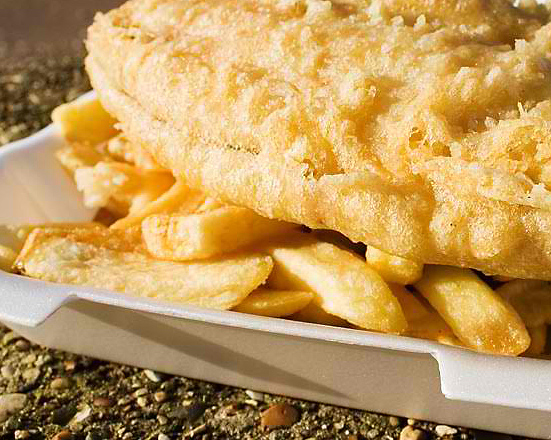 After a great morning of fishing in Canada, what better way to spend your lunch than one an island eating your catch? Shore lunch is a tradition for Canadian family fishing resorts. If you brought a resort guide along with your family fishing, they will fillet your fish for you, or you can do it yourself. You will then get to fry up your delicious fish and have a tasty Walleye fish shore lunch with your family. Shore lunch allows your family a break from the heat, and a chance to reap the rewards of your fishing skills. If your family is going to do a shore lunch on your own, a good idea would be to plan ahead of time and pack a lunchbox. Some Canada family resorts have designated spots for shore lunch.
After a great morning of fishing in Canada, what better way to spend your lunch than one an island eating your catch? Shore lunch is a tradition for Canadian family fishing resorts. If you brought a resort guide along with your family fishing, they will fillet your fish for you, or you can do it yourself. You will then get to fry up your delicious fish and have a tasty Walleye fish shore lunch with your family. Shore lunch allows your family a break from the heat, and a chance to reap the rewards of your fishing skills. If your family is going to do a shore lunch on your own, a good idea would be to plan ahead of time and pack a lunchbox. Some Canada family resorts have designated spots for shore lunch.
It would be a good idea to bring:
- A fillet knife and/or fish scaler
- cooking utensils such as a long-blade spatula, tongs and a long handled serving spoon
- Eating utensils such as forks, plates, cups, knives, spoons
- Fish batter
- A garbage bag
- Napkins
- Oil/butter
- Matches/lighter
Fishing Licenses
Of course, staying at a Canada family fishing resort wouldn’t be very enjoyable if you couldn’t fish. That’s why it is important to remember to get a fishing license for you and your family during your stay in Canada. You can find fishing licenses at bait and tackle stores or most of the region’s resorts. There a couple types of Canada fishing licenses, the main ones being the Sport-fishing license and the Conservation fishing license. The Sport-fishing License allows you the full limit, while the conservation fishing license which is a reduced limit. Canada also has Canada’s Family Fishing Week, which allows the family to fish without a license. You will have to check which week Canada Family Fishing Week is the summer you plan on visiting.
Other Activities
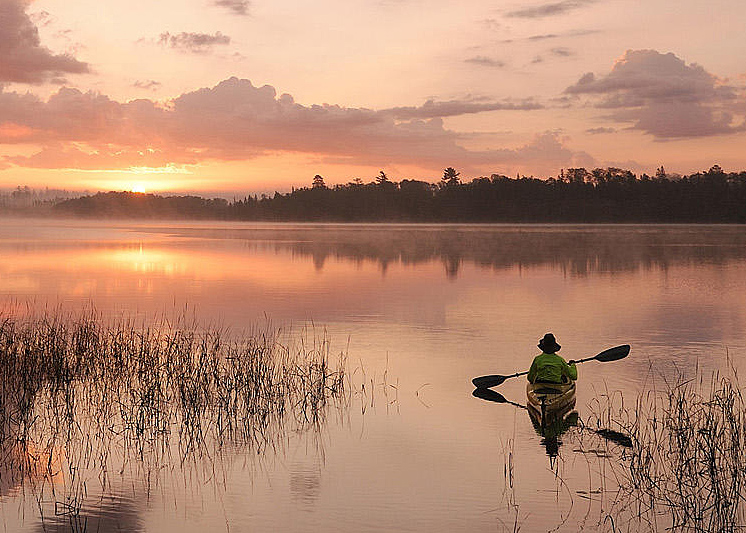 There are many fun family activities to do during your stay at a Canada family fishing resort besides fishing. Some resorts have docks or beaches for those hot summer days when you want to take a dip in a beautiful Canadian lake. While on the resort your family can also take a hike in the great outdoors. Other resorts may offer kayaks or canoes for a day on the Canadian lake. A good idea would be to bring a camera- you never know what amazing sights you will see on a hike in Canada away from the resort. There will be plenty of fantastic photo opportunities for photography, on and off the water. During your stay at the family fishing resort your family may also want to do some bird watching and nature watching. Your family may even have a chance at seeing a great blue heron, a magnificent sight on the lakes in Canada. On a hike in Canada, your family might also spot a few blueberries for blueberry pie or raspberries for raspberry pie – a very tasty treat for all. If you feel spending the day away from the resort and checking out the local attractions, you may be interested in visiting local museums or stores. The local stores hold everything from your basics to handcrafted souvenirs. There are often festivals or fishing tournaments going on in local towns and cities. You can find out more about local festivals by going to http://www.freemap.ca/festivals.php
There are many fun family activities to do during your stay at a Canada family fishing resort besides fishing. Some resorts have docks or beaches for those hot summer days when you want to take a dip in a beautiful Canadian lake. While on the resort your family can also take a hike in the great outdoors. Other resorts may offer kayaks or canoes for a day on the Canadian lake. A good idea would be to bring a camera- you never know what amazing sights you will see on a hike in Canada away from the resort. There will be plenty of fantastic photo opportunities for photography, on and off the water. During your stay at the family fishing resort your family may also want to do some bird watching and nature watching. Your family may even have a chance at seeing a great blue heron, a magnificent sight on the lakes in Canada. On a hike in Canada, your family might also spot a few blueberries for blueberry pie or raspberries for raspberry pie – a very tasty treat for all. If you feel spending the day away from the resort and checking out the local attractions, you may be interested in visiting local museums or stores. The local stores hold everything from your basics to handcrafted souvenirs. There are often festivals or fishing tournaments going on in local towns and cities. You can find out more about local festivals by going to http://www.freemap.ca/festivals.php
Now that you have a bit more information on Canada resorts, you can better plan out your family fishing resort stay to be the best it can be for your family’s needs. Whether you have decided a fly-in outpost, fly-in resort or drive-up fishing resort is best for your family, you are bound to have a memorable family resort vacation in beautiful Canada.

